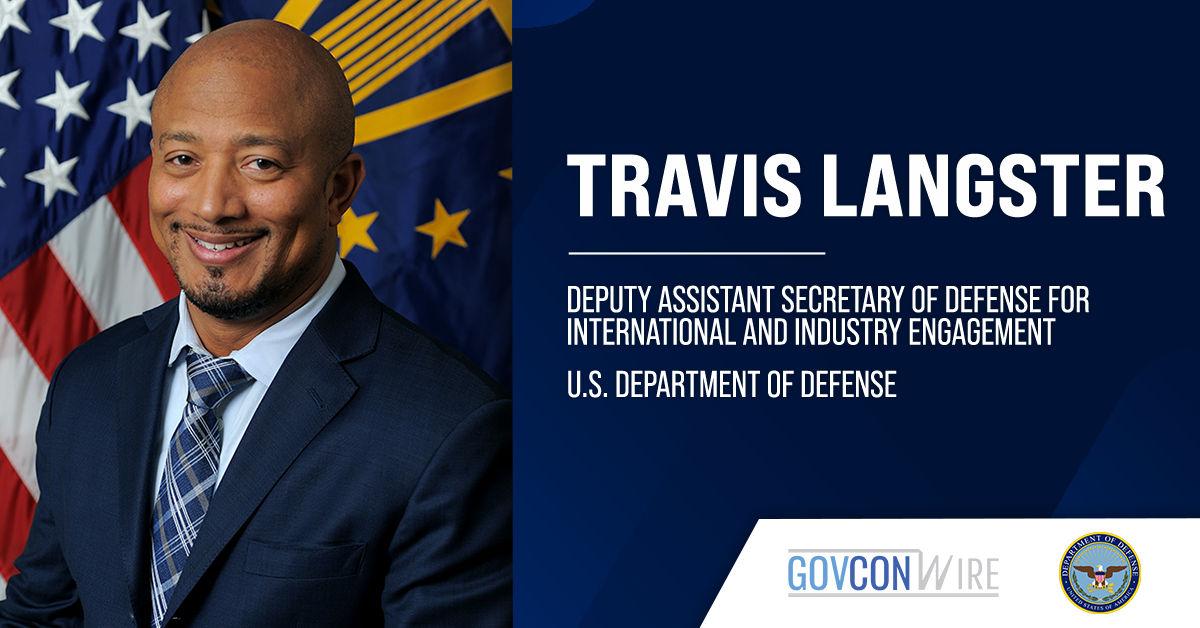The Department of Defense is sharpening its focus on partnerships to stay ahead of peer and near peer competitors.
While the U.S. has a strong defense industrial base, its allies “each have their own robust defense industries and will continue to be a cornerstone of the DOD’s concept of integrated deterrence,” Travis Langster, deputy assistant secretary of defense for international and industry engagement, said in his closing keynote address at the Potomac Officers Club’s GovCon International Summit on Thursday.
In both the National Defense Strategy — the backbone of the DOD’s changing warfighting approach — and the more recently released National Defense Industrial Strategy, the department highlights the importance of its global partner network to maintaining an advantage in today’s global landscape. The department, Langster emphasized, is “fully engaged” in making sure its technology strategies and initiatives align with this vision.
“We’re partnering with the industry to achieve resilient supply chains, which is a part of the NDIS, especially key emerging technology areas,” he said. “We’re focused on strengthening our defense industrial base, improving resilience of those supply chains so they can deliver what our war fighters need when they need it.”
Langster noted microelectronics, shipbuilding and submarines as some areas in which supply chains are a top priority.
“We’re leveraging flexible acquisition for these investments, including through the Defense Production Act and the Industrial Base Analysis and Sustainment programs,” he noted, explaining that these pathways support a resilient supply chain as well as workforce development programs and initiatives.
Langster cited Replicator, a Defense Innovation Unit-managed project intended to accelerate the delivery of novel capabilities to the warfighter by choosing specific challenges for providers to focus on, as one project using flexible acquisition practices.
He also highlighted the Defense Industrial Base Consortium, an other transaction authority agreement that was introduced in January, as a way to “help stimulate growth of the industrial base” by leveraging the department’s prior ties.
On the international level, the DOD is using Security of Supply Arrangements, or SOSAs, which he explained are “bilateral arrangements that help ensure the mutual supply of defense goods and services with allies and partners,” to engage with the industrial base.
“[SOSAs] also allow the DOD to request property delivery for DOD contracts, subcontracts or orders from companies in other countries,” an option he said “does work both ways.”
Langster emphasized that international partnerships can take many forms. He noted AUKUS, a trilateral defense pact between Australia, the U.K. and U.S. designed to deliver conventionally armed nuclear submarines to Australia, as another way the U.S. is engaging with its global allies.
In June, the DOD participated in the first-ever U.S.-Japan Defense Industrial Cooperation, Acquisition and Sustainment Forum, which Langster called a “key international partnership.”
Now, he said, the U.S. and Japan have “established working groups for further discussions on identifying opportunities for missile co-production, co-sustainment of four deployed US Navy ships and U.S. aircraft and supply chain resiliency.”
These and many other partnerships have created an environment of “production diplomacy,” Langster said.

Partnerships are a major priority for agencies across the U.S. government, including the Department of Homeland Security. Find out more about how DHS is approaching collaboration at the Potomac Officers Club’s 2024 Homeland Security Summit on Nov. 13, where public and private sector homeland security experts will gather to share their insights on today’s most important homeland security challenges and opportunities. Secure your spot at the 2024 Homeland Security Summit to join the conversation.




